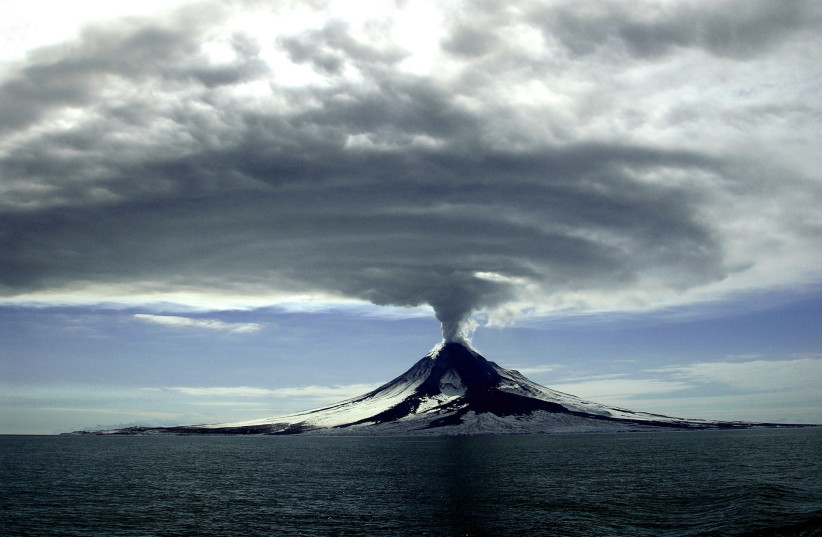Italian supervolcano may erupt after more than 500 years – study
The Campi Flegrei supervolcano in southern Italy has reportedly weakened, increasing the likelihood of an eruption, according to new research conducted by the University College London (UCL) and Italy’s National Research Insititute for Geophysics and Volcanology (INGV).
Using an innovative model that analyzes earthquake patterns and ground uplift, the peer-reviewed study, published in the journal Nature’s Communications Earth & Environment, found that certain parts of the volcano have been stretched to the point of potential rupture. However, the researchers emphasize that further investigation is needed to accurately predict the occurrence of an eruption.
The Campi Flegrei volcano has exhibited signs of unrest for over 70 years, with periods of intensified activity in the 1950s, 70s and 80s, followed by a slower phase of unrest in the past decade.
During these periods, tens of thousands of small earthquakes have occurred and the coastal town of Pozzuoli has experienced an uplift of nearly 4 meters (13 feet), equivalent to the height of a double-decker bus.
The study employed a model developed at UCL to assess volcano fracturing. By analyzing earthquake patterns and ground uplift, the researchers concluded that certain sections of the volcano are nearing the breaking point.
 A volcano is seen exploding. The level of devastation it could cause is something the world is not prepared for (Illustrative). (credit: Pixabay/Stockvault)
A volcano is seen exploding. The level of devastation it could cause is something the world is not prepared for (Illustrative). (credit: Pixabay/Stockvault)Campi Flegrei volcano is moving closer to rupture, not guaranteeing an eruption
Professor Christopher Kilburn, lead author and UCL Earth Sciences expert, explained that while the study confirms the Campi Flegrei volcano is moving closer to rupture, it does not guarantee an eruption.
“The rupture may open a crack through the crust, but the magma still needs to be pushing up at the right location for an eruption to occur,” he explained. “This is the first time we have applied our model, which is based on the physics of how rocks break, in real-time to any volcano.
This study represents the first application of the model in real-time to an active volcano. Professor Kilburn highlighted the model’s accuracy, as it correctly predicted the increasing number of small earthquakes associated with Campi Flegrei’s unrest. Adjustments will now be made to improve estimates of the likelihood of new routes being formed for magma or gas to reach the surface.
Dr. Nicola Alessandro Pino from the Vesuvius Observatory, representing the INGV in Naples, emphasized the volcano’s weakening state. Despite smaller stresses compared to the last major crisis 40 years ago, parts of the volcano are becoming more vulnerable to rupture.
Campi Flegrei is the closest active volcano to London, though it does not resemble a typical volcano. Instead of forming a traditional mountain, it takes the shape of a gentle depression spanning 12-14 kilometers (7.5-8.5 miles), known as a caldera. This unique structure has led to the establishment of a community of 360,000 people on its surface.
Over the past decade, the ground beneath Pozzuoli has been gradually rising at a rate of approximately 10 centimeters (4 inches) per year. Additionally, a significant number of small earthquakes have been recorded since the mid-1980s, with April registering the highest monthly count of over 600.
These disturbances are attributed to the movement of fluids approximately 3 kilometers (2 miles) below the surface, possibly including molten rock (magma) and volcanic gas. The ongoing phase of unrest appears to be driven by magmatic gas seeping into rock fractures, permeating the 3-kilometer-thick crust.
The earthquakes result from faults slipping due to crustal stretching. Analysis of earthquake patterns from 2020 suggests that the rock is exhibiting inelastic behavior, breaking rather than bending.
Dr. Stefania Danesi from INGV Bologna highlighted the challenge of deciphering underground activities and the reliance on interpreting clues provided by the volcano, such as earthquakes and ground uplift.
The researchers emphasized that the unrest observed since the 1950s has cumulative effects. Consequently, an eruption may be preceded by weaker indicators, such as a reduced rate of ground uplift and fewer earthquakes.
The study concludes that the current tensile strength of Campi Flegrei is approximately one-third of what it was in 1984.
The researchers stress that an eruption is not inevitable. Dr. Stefano Carlino from the Vesuvius Observatory explained that, like other volcanoes that have remained dormant for generations, Campi Flegrei might establish a new pattern of gentle uplift and subsidence or return to a state of rest. Preparedness for all possible outcomes is crucial.





Comments are closed.